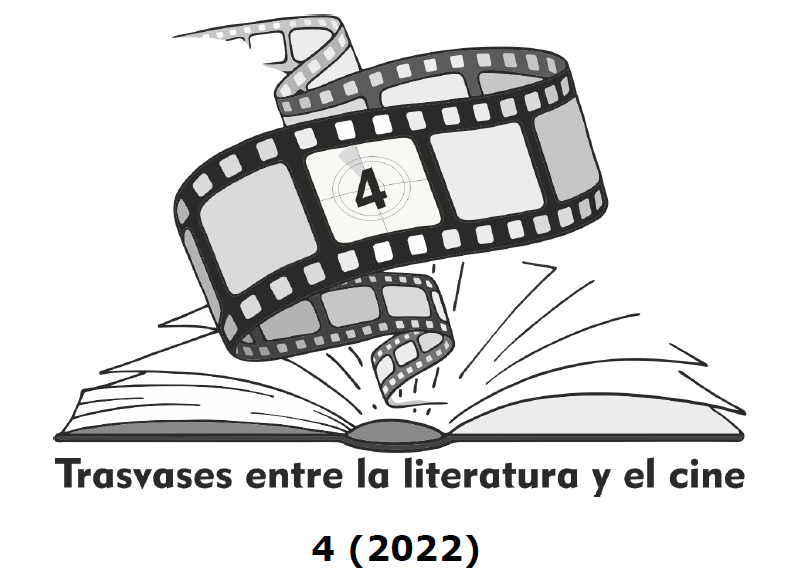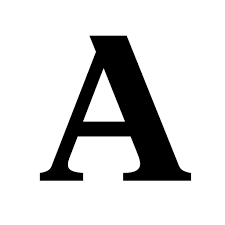Cervantes y Goya: una lectura intertextual entre Orson Welles y Terry Gilliam
DOI:
https://doi.org/10.24310/Trasvasestlc.vi4.14409Keywords:
Miguel de Cervantes, Francisco de Goya, Literature and Cinema, Cinema and Painting, intertextualityAbstract
Of all the adventures of Don Quixote, the one with the windmills that the character sees (or insists on seeing) as giants in chapter VIII of the First Part is one of the most cinematographic of the entire work. The objective of this article is to analyze how Orson Welles and Terry Gilliam rewrite this famous scene through their peculiar use of cinematographic language. In particular, the meaning acquired by the presence of some emblematic works by Francisco de Goya in both film texts will be analyzed. It will be shown how both the black paintings and The Colossus and The Giant contribute to elaborate a perspectivist discourse on Don Quixote’s madness and to rewrite the famous scene of the windmills also based on the aforementioned pictorial hypotexts.
Downloads
Metrics
Publication Facts
Reviewer profiles N/A
Author statements
Indexed in
-
—
- Academic society
- N/A
- Publisher
- Universidad de Málaga
References
AGAMBEN, Giorgio (2005), Profanaciones, Buenos Aires, Adriana Hidalgo.
ARRANZ, Ferrán (2016), El Quijote y el cine, Madrid, Cátedra.
AUMONT, Jacques (1989), El ojo interminable. Cine y pintura, Barcelona, Paidós.
BELTING, Hans (2007), Antropología de la imagen, Madrid, Katz.
BONNEFOY, Yves (2018), Goya. Las pinturas negras, Madrid, Tecnos.
BUÑUEL, Luis (2012), Mi último suspiro, Barcelona, DeBolsillo.
CALVINO, Italo (2000), Lezioni americane. Sei proposte per il prossimo millennio, Milano, Mondadori.
CANDELORO, Antonio (2016), «Don Quijote ‘dentro’ y ‘fuera’ de la pantalla: la versión de Orson Welles», Tonos Digital, 31, págs. 1-24 [En línea: https://digitum.um.es/digitum/handle/10201/50282. Fecha de consulta: 04/03/2022].
CARBONI, Massimo (2018). La mosca de Dreyer. L’opera della contingenza nelle arti, Milano: Jaca Book.
CERVANTES, Miguel de (2004), Don Quijote de la Mancha, ed. del Instituto Cervantes, Barcelona, Galaxia Gutenberg-Círculo de Lectores-Centro.
COMETA, Michele (2012), La scrittura delle immagini. Letteratura e cultura visuale, Milano, Raffaello Cortina.
CORSI, Daniele (2018), «Sulla natura intersemiotica del processo traduttivo. Un progetto multimediale su ‘Cervantes e il cinema’», en D. Corsi y J. Pérez Ugena (eds.), Mosaico 2. Sulla traduzione, Arezzo, Biblioteca Aretina, págs.143-163.
COSTA, Antonio (2002), Il cinema e le arti visive, Torino, Einaudi.
ECO, Umberto (2003), Dire quasi la stessa cosa, Milano, Bompiani.
ÉGIDO, Aurora (1994), Cervantes y las puertas del sueño. Estudios sobre La Galatea, El Quijote y El Persiles, Barcelona, PPU.
EJZENSTEIJN, Serguéi (1974), El sentido del cine, Buenos Aires, Siglo XXI.
EJZENSTEIJN, Serguéi (2019), El Greco, Vitoria-Buenos Aires, Sans Soleil Ediciones.
DE LA ROSA, Emilio, GONZÁLEZ, Luis M., y MEDINA, Pedro (eds.) (2005), Cervantes en imágenes. Donde se cuenta cómo el cine y la televisión evocaron su vida y su obra (edición ampliada), Ayuntamiento de Alcalá de Henares-Comunidad de Madrid, Festival de Cine de Alcalá de Henares.
FORADADA, Carlos (2019), Goya recuperado en las Pinturas negras y El coloso, Gijón, Trea.
GENETTE, Gérard (1989), Palimpsestos. La literatura en segundo grado, Madrid, Taurus.
JAKOBSON, Roman (1981), Ensayos de lingüística general, Barcelona, Seix-Barral.
GARGANO, Antonio (2010), «Gigantes, torres, molinos. Dante, Inferno, XXXI; Cervantes, Quijote, I, 8», Anuario de Estudios Cervantinos, VI, págs. 91-101.
GENTILE, Brigidina (2007), «Da Cervantes a Welles: luce su Don Quijote», en M. C. Ruta (ed.), L’insula del Don Chisciotte, Palermo, Flaccovio, págs. 127-137.
D’ANGELA, Toni (ed.) (2004), Nelle terre di Orson Welles, Alessandria, Edizioni Falsopiano.
GLENDINNING, Nigel (2004), «El Coloso de Goya y la poesía patriótica de su tiempo», Dieciocho. Hispanic Enlightment, 27, 1, págs. 47-58.
GLENDINNING, Nigel (2009), «En torno al Coloso atribuido a Goya una vez más», Goya, 329, págs. 294-299.
HALBWACKS, Maurice (2004), La memoria colectiva, Zaragoza, Prensas Universitarias de Zaragoza.
HERVÁS LEÓN, Miguel (2019), La Quinta de Goya y sus Pinturas negras, Madrid, Casimiro.
LUCÍA MEGÍAS, José Manuel (2006), Leer el Quijote en imágenes. Hacia una teoría de los modelos iconográficos, Madrid, Calambur.
MADARIAGA, Salvador de (1927), Guía del lector del Quijote. Ensayo psicológico sobre el Quijote, Buenos Aires, Sudamericana, 1967.
MELVILLE, Herman (2000), Preferiría no hacerlo. Bartleby el escribiente, de Herman Melville seguido de tres ensayos sobre Bartleby de Gilles Deleuze, Giorgio Agamben y José Luis Pardo, Valencia, Pre-Textos.
MENA MARQUÉS, Manuela (2009), “El Coloso y su atribución a Goya”, Boletín del Museo del Prado, XXIV, 44, págs. 34-61.
MENDELSUND, Peter (2015), Qué vemos cuando leemos, Barcelona, Seix Barral.
MILL, John Stuart (1996), Diario, Madrid, Alianza.
MOLINA BAREA, María del Carmen (2017), «Eisenstein y El Greco: la cinematografía del éxtasis», Escritura e imagen, 13, págs. 75-94.
PANOFSKI, Erwin (1972), Estudios de iconología, Madrid, Alianza.
QUIÑONERO, Juan Pedro (2020), El cine comienza con Goya, Madrid, Cátedra.
REINSTÄDLER, Jannet (2019), «Los sueños de Don Quijote en el cine: dinámicas transmediales», Ibero, 90, págs. 151-171.
RICOEUR, Paul (2010), La memoria, la historia, el olvido, Madrid, Trotta.
RIQUER, Martín de (2010), Para leer a Cervantes, Barcelona, Acantilado.
ROSENBAUM, Jonathan (2021), «When Will –and How Can– We Finish Orson Welles’ Don Quixote?», Jonathan Rosenbaum, s. pág. [En línea: https://jonathanrosenbaum.net/2021/09/when-will-and-how-can-we-finish-orson-welless-don-quixote-expanded-version/. Fecha de consulta: 04/03/2022].
ROSENBAUM, Jonathan (2007), Discovering Orson Welles, California, University of California Press.
SEGRE, Cesare, La pelle di San Bartolomeo. Discorso e tempo dell’arte, Torino, Einaudi, 2003.
SPITZER, Leo (1955), Lingüística e historia literaria, Madrid, Gredos.
STOICHITA, Victor, CODERCH, Anna Maria (2000), El último carnaval: un ensayo sobre Goya, Madrid, Siruela.
TRAVER VERA, Ángel J. (2001), «Las fuentes clásicas en el ‘Discurso de la Edad de Oro’ del Quijote», en C. M. ABANILLAS NÚÑEZ (ed.), Actas de las II Jornadas de Humanidades Clásicas, Almendralejo, IES Santiago Apóstol, págs. 82-95.
VILLANUEVA, Darío (2008), El Quijote antes del cinema, Madrid, Real Academia Española.
VILLANUEVA, Darío (2016), «Conferencia del Director de la RAE en el Ateneo de Madrid», RAE, s. pág. [En línea: https://www.rae.es/noticia/dario-villanueva-el-quijote-es-una-imagen-un-choque-de-visiones. Fecha última consulta: 04/03/2022].
VILLANUEVA, Darío (2020), El Quijote antes del cinema: filmoliteratura, Madrid, Visor.
Downloads
Published
How to Cite
Issue
Section
License
All authors published in this journal accept the following copyright terms:
a. Authors retain their authors´ rights (copyright) and grant First Publication Rights to the journal, which whill be published under a the Creative Commons Attribution-NonCommercial-ShareAlike 4.0 International (CC BY-NC-SA 4.0) license. All about this license is available in the following link: <http://creativecommons.org/licenses/by-nc-sa/4.0>
b. Authors may separately establish additional agreements for the non-exclusive distribution of the version of the work published in the journal (e.g. including it in an institutional repository, or publishing it in a book) with an acknowledgement of its initial publication in this journal.
c. Authors are allowed and encouraged to disseminate their work electronically (e.g. in institutional repositories or on their own website) as this can lead to productive exchanges, as well as earlier and more extensive citation of published work.
The author is responsible for obtaining permission from the copyright holder when using copyrighted materials.
This electronic journal is published by University of Málaga (UmaEditorial), thus it is necessary to cite the origin of any partial or total reproduction.








22.png)










